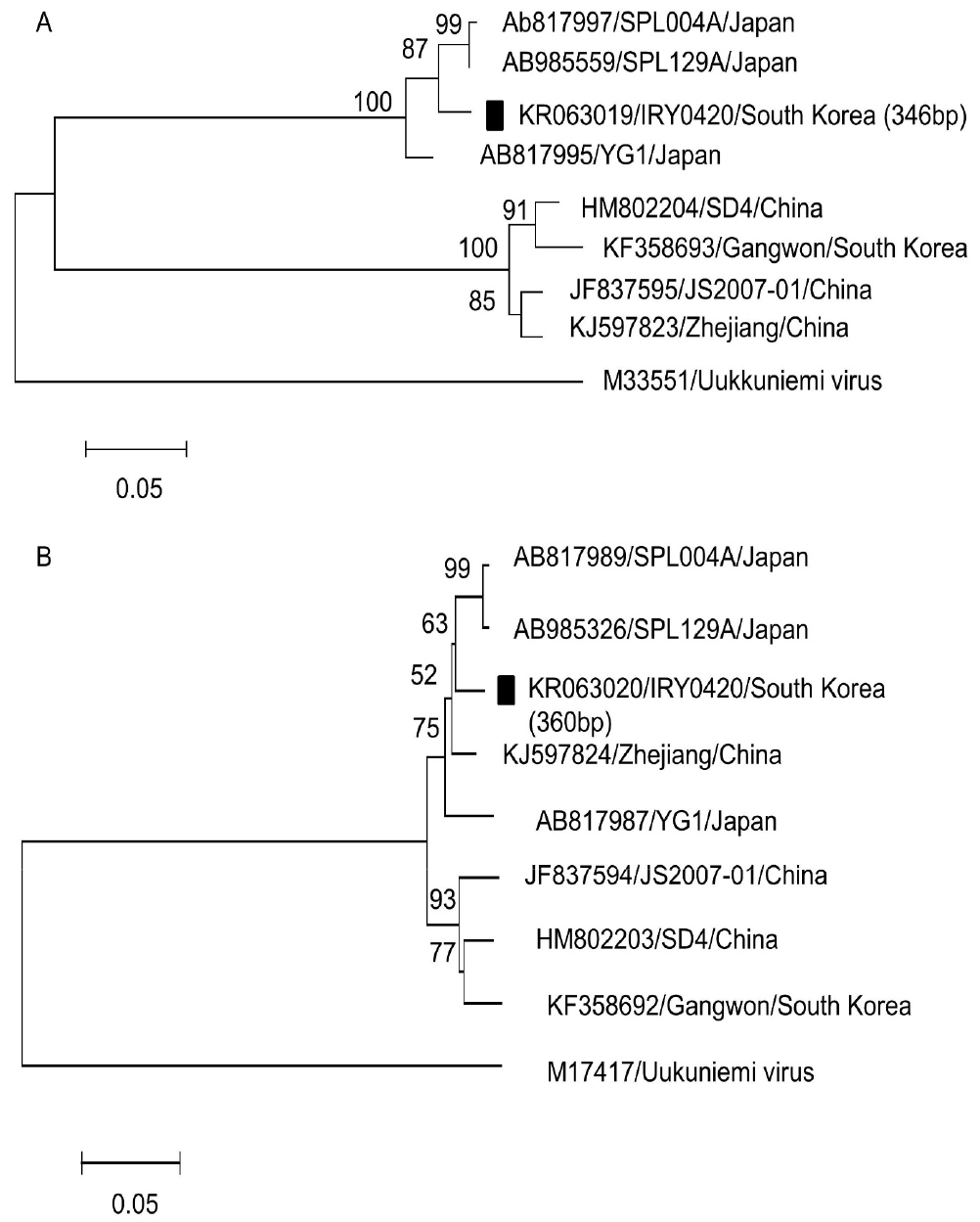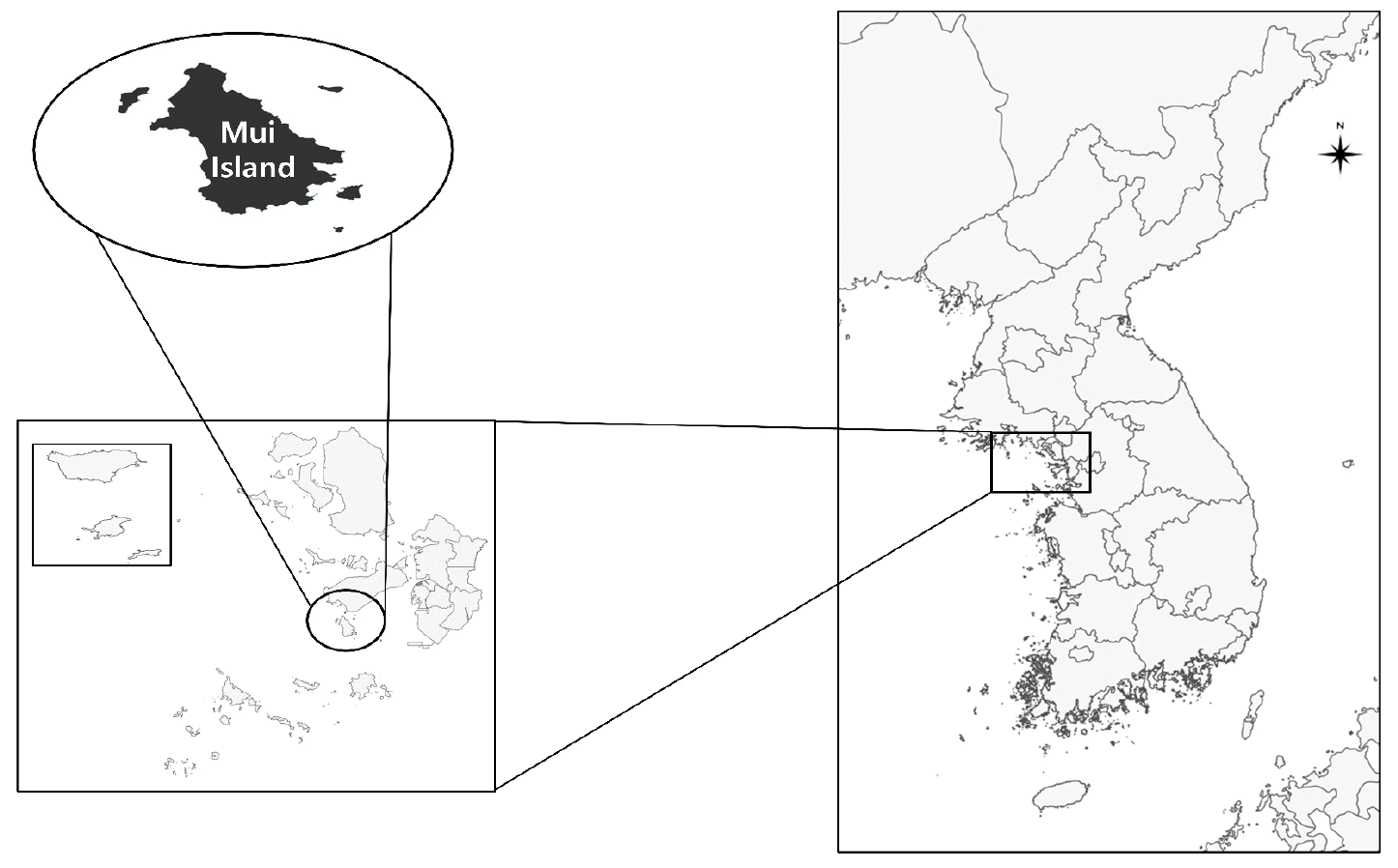1. Yu XJ, Liang MF, Zhang SY, Liu Y, Li JD, Sun YL, et al. Fever with thrombocytopenia associated with a novel bunyavirus in China.
N Engl J Med 2011;364:1523-32.DOI:
10.1056/NEJMoa1010095. PMID:
21410387. PMCID:
PMC3113718.
2. Casel MA, Park SJ, Choi YK. Severe fever with thrombocytopenia syndrome virus: emerging novel phlebovirus and their control strategy.
Exp Mol Med 2021;53:713-22.DOI:
10.1038/s12276-021-00610-1. PMID:
33953322. PMCID:
PMC8178303.
3. Liu Q, He B, Huang SY, Wei F, Zhu XQ. Severe fever with thrombocytopenia syndrome, an emerging tick-borne zoonosis.
Lancet Infect Dis 2014;14:763-72.DOI:
10.1016/S1473-3099(14)70718-2.
4. Kim KH, Yi J, Kim G, Choi SJ, Jun KI, Kim NH, et al. Severe fever with thrombocytopenia syndrome, South Korea, 2012.
Emerg Infect Dis 2013;19:1892-4.DOI:
10.3201/eid1911.130792. PMID:
24206586. PMCID:
PMC3837670.
5. Takahashi T, Maeda K, Suzuki T, Ishido A, Shigeoka T, Tominaga T, et al. The first identification and retrospective study of Severe Fever with Thrombocytopenia Syndrome in Japan.
J Infect Dis 2014;209:816-27.DOI:
10.1093/infdis/jit603. PMID:
24231186. PMCID:
PMC7107388.
6. Tran XC, Yun Y, Van An L, Kim SH, Thao NTP, Man PKC, et al. Endemic Severe Fever with Thrombocytopenia Syndrome, Vietnam.
Emerg Infect Dis 2019;25:1029-31.DOI:
10.3201/eid2505.181463. PMID:
31002059. PMCID:
PMC6478219.
7. Lin TL, Ou SC, Maeda K, Shimoda H, Chan JP, Tu WC, et al. The first discovery of severe fever with thrombocytopenia syndrome virus in Taiwan.
Emerg Microbes Infect 2020;9:148-51.DOI:
10.1080/22221751.2019.1710436. PMID:
31918622. PMCID:
PMC6968498.
8. Song BJ, Lim HC, Jeon DY, Song HJ. Distribution and Detection of Severe Fever with Thrombocytopenia Syndrome Virus in Ticks Collected from Jeollanam-do, Korea.
J Bacteriol Virol 2016;46:93-8.DOI:
10.4167/jbv.2016.46.2.93.
9. Lee KH, Medlock JM, Heo ST. Severe Fever with Thrombocytopenia Syndrome Virus, Crimean-Congo Haemorrhagic Fever Virus, and Migratory Birds.
J Bacteriol Virol 2013;43:235-43.DOI:
10.4167/jbv.2013.43.4.235.
10. Agency KDCP. Infectious Diseases Surveillance Yearbook, 2020. (https://www.kdca.go.kr/npt/biz/npp/portal/nppPblct DtaView.do?pblctDtaSeAt=1&pblctDtaSn=2452.).
11. Kim KH, Ko MK, Kim N, Kim HH, Yi J. Seroprevalence of Severe Fever with Thrombocytopenia Syndrome in Southeastern Korea, 2015.
J Korean Med Sci 2017;32:29-32.DOI:
10.3346/jkms.2017.32.1.29. PMID:
27914128. PMCID:
PMC5143294.
12. Yoo JR, Heo ST, Kim M, Song SW, Boo JW, Lee KH. Seroprevalence of Severe Fever with Thrombocytopenia Syndrome in the Agricultural Population of Jeju Island, Korea, 2015-2017.
Infect Chemother 2019;51:337-44.DOI:
10.3947/ic.2019.51.4.337. PMID:
31668024. PMCID:
PMC6940373.
13. Han MA, Kim CM, Kim DM, Yun NR, Park SW, Han MG, et al. Seroprevalence of Severe Fever with Thrombocytopenia Syndrome Virus Antibodies in Rural Areas, South Korea.
Emerg Infect Dis 2018;24:872-4.DOI:
10.3201/eid2405.152104. PMID:
29664384. PMCID:
PMC5938763.
15. Zhang L, Ye L, Ojcius DM, Lou X, Wang C, feng C, et al. Characterization of severe fever with thrombocytopenia syndrome in rural regions of Zhejiang, China.
PLoS One 2014;9:e111127.DOI:
10.1371/journal.pone.0111127. PMID:
25356556. PMCID:
PMC4214719.
16. Sun JM, Zhang YJ, Gong ZY, Zhang L, Lv HK, Lin JF, et al. Seroprevalence of severe fever with thrombocytopenia syndrome virus in southeastern China and analysis of risk factors.
Epidemiol Infect 2015;143:851-6.DOI:
10.1017/S0950268814001319. PMID:
24866248. PMCID:
PMC4411641.
17. Huang X, Zhang Z, Jin G, Wang X, Tan C, Yin H, et al. Presence of Antibodies against Severe Fever with Thrombocytopenia Syndrome Virus in Non-Endemic Areas of China.
Jpn J Infect Dis 2017;70:248-51.DOI:
10.7883/yoken.JJID.2016.214. PMID:
27580581.
18. Im JH, Baek J, Durey A, Kwon HY, Chung MH, Lee JS. Current Status of Tick-Borne Diseases in South Korea.
Vector Borne Zoonotic Dis 2019;19:225-33.DOI:
10.1089/vbz.2018.2298. PMID:
30328790.
19. Li Z, Hu J, Bao C, Li P, Qi X, Qin Y, et al. Seroprevalence of antibodies against SFTS virus infection in farmers and animals, Jiangsu, China.
J Clin Virol 2014;60:185-9.DOI:
10.1016/j.jcv.2014.03.020. PMID:
24793967.
20. Ding F, Guan XH, Kang K, Ding SJ, Huang LY, Xing XS, et al. Risk factors for bunyavirus-associated severe Fever with thrombocytopenia syndrome, china.
PLoS Negl Trop Dis 2014;8:e3267.DOI:
10.1371/journal.pntd.0003267. PMID:
25330383. PMCID:
PMC4199554.
21. Cho SS, Lee TK, Bang YW, Kim CJ, Im HJ, Kwon YJ, et al. Factors Associated with Unmet Needs for Medical Care among Island Inhabitants in Korea.
J Agric Med Community Health 2010;35:151-64.DOI:
10.5393/JAMCH.2010.35.2.151.
22. Yu SH, Cho WH, Park CY, Lee MK. Health Care Utilization and Its Determinants among Island Inhabitants. J Prev Med Pubic Health 1987;20:287-300.
23. Park SW, Han MG, Yun SM, Park C, Lee WJ, Ryou J. Severe fever with thrombocytopenia syndrome virus, South Korea, 2013.
Emerg Infect Dis 2014;20:1880-2.DOI:
10.3201/eid2011.140888. PMID:
25341085. PMCID:
PMC4214315.
24. Li P, Tong ZD, Li KF, Tang A, Dai YX, Yan JB. Seroprevalence of severe fever with thrombocytopenia syndrome virus in China: A systematic review and meta-analysis.
PloS one 2017;12:e0175592.DOI:
10.1371/journal.pone.0175592. PMID:
28399161. PMCID:
PMC5388504.
25. Zeng P, Ma L, Gao Z, Wang J, Liu J, Huang X, et al. A study of seroprevalence and rates of asymptomatic viremia of severe fever with thrombocytopenia syndrome virus among Chinese blood donors.
Transfusion 2015;55:965-71.DOI:
10.1111/trf.12953. PMID:
25496479. PMCID:
PMC4428969.
26. Niu G, Li J, Liang M, Jiang X, Jiang M, Yin H, et al. Severe fever with thrombocytopenia syndrome virus among domesticated animals, China.
Emerg Infect Dis 2013;19:756-63.DOI:
10.3201/eid1905.120245. PMID:
23648209. PMCID:
PMC3647489.





 PDF
PDF Citation
Citation Print
Print



 XML Download
XML Download